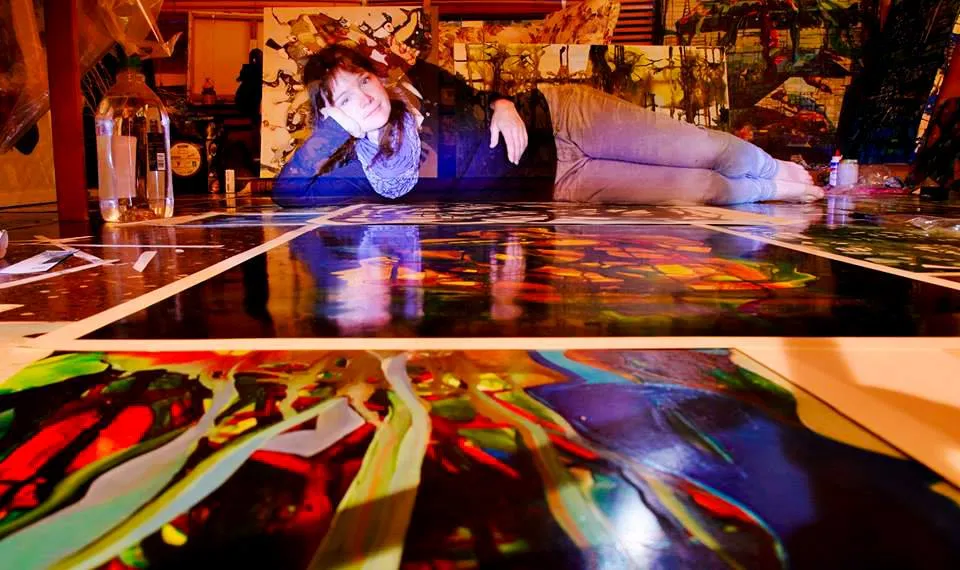Putting a price on creative talent

When you get into the details of making a living from creative talent, you run into a key question: how much do I charge?
Figuring out how much to charge can be tricky, because it’s not an exact science. You want to charge enough that you’re getting paid what you’re worth, but you don’t want to charge so much that you can’t get anyone to buy your art!
I caught up with successful painter Micheline Robinson to get some details on how to set your prices as an artist. Micheline has been making a living from her art for 20 years now - first in Canada, then the UK, and now on the Kapiti Coast, north of Wellington. Here are her tips for setting prices for your talent:
1: Never work for free when doing business
You’ll almost certainly get some offers to work for free, in exchange for “exposure.” This can be tempting, especially when you’re starting out. But it’s not actually a very good deal. For starters, you can’t pay your bills with exposure - and there’s no guarantee that the exposure you do get will lead to paid work.
It also puts strain on the overall artistic community. If there are a bunch of people out there charging for their work, and you work for free, you’re undermining the profession and the right to charge for a professional artistic service. Why pay an artist when another will work for free?
Finally, it’s not uncommon for the so-called “exposure” to not give you any exposure at all. Micheline once painted a mural for free, on the wall of a business. Not long after she finished painting it, the business was sold. . . and the new owner painted over her mural, and with it all of her so-called “exposure.” Rats.
There are exceptions to this. There’s nothing wrong with working for free if you’re working for a charity, or other cause that you want to help support. This is essentially the same as giving money to a charity, except you’re giving your time and talent instead. But, just like giving money to charity, you should approach situations like this with no expectations - it’s about supporting a cause, not about getting anything back for yourself.
2: Forget about an hourly rate
Some people charge an hourly rate for their creative work. Micheline does not advise this. The reason? “As you get more experienced, you’ll be able to work faster. But the work you produce will be more than likely better than it was when you were younger.” So why should someone get a discount, just because you’re getting better at producing great art in a shorter period of time? This doesn’t make any sense.
Rather, you should charge flat rates for your work, based on size, materials involved, your experience and the overall market for similar work.
3: Start small
So you’re going to charge a flat rate - but what should that rate be? If you price your work too high, you’re going to have a hard time getting clients. This is especially true because a lot of art is priced based on supply and demand and the reputation of the artist. Firstly find out information about the market in your area for the work you are creating, then aim to go on the lower end without undercharging yourself. Once you find out prices, you will be better equipped to know where you can place yourself in your local marketplace.
The trick is to build that reputation up by setting your prices reasonably low. This gets you more clients, and keeps you busier. And as each of those clients tells their friends about how great your work was, your reputation will grow a lot faster than it would had you done fewer pieces of work for a higher rate per piece. It also speeds up the learning process as the busier you’ll be, the quicker you will gain experience.
Eventually supply and demand (and reputation, especially if you win awards) will allow you to raise your prices over time. If you see that your work sells quickly and consistently for a long period, it may be time to raise your prices a little. Don’t go too far up, an extra $50-$100 on a $800 oil painting helps you but doesn’t scare the customers away.
4: Think about how the work will be used
Micheline always considers how work will be used when she’s setting her prices. One great example is book covers. All book covers take roughly the same amount of effort - but a book that is going to have a print run of 10,000 is going to make a lot more money for its publisher than a book with a print run of 100! So she sets her prices with this in mind. “You should either ask for a royalty, or charge more - either way, you should get a piece of the value you create.”
So when you’re setting your prices, ask your potential client what they’re going to do with the work. The more value they are going to get out of it, the more you should charge.
How do you set prices for your creative talent? Leave a comment and let us know!
